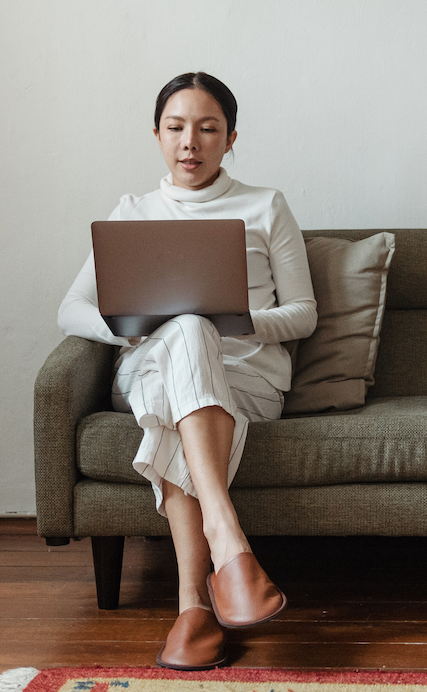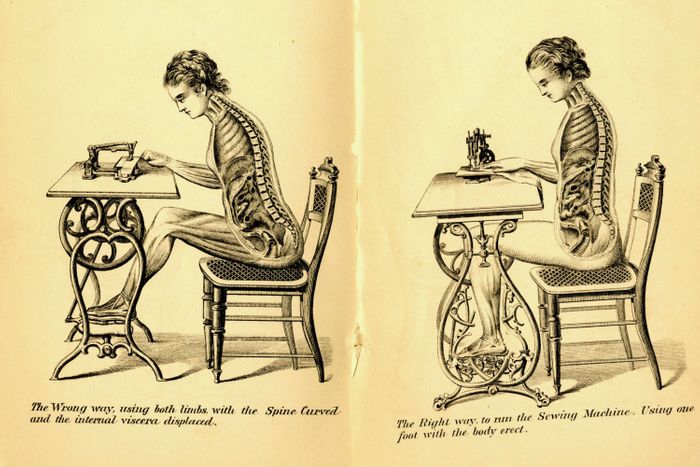The reality of the COVID-19 pandemic has hit chiropractors and patients hard with more neck and back pain than ever before due to employees working from home.
In early March when the pandemic first hit, and stay-at-home orders were put in place, millions of workers were relocated to their home office even if they didn’t have one. Sounds great, right? All you need is a laptop with internet connection, and you’re on your way to living the sweatpants life while working from home. However, with many patients and chiropractors alike being unprepared for such an event (who’d have thought?), many were not ready with good home office ergonomics.
According to a Facebook survey from the American Chiropractic Association in April, 92% of chiropractors said that patients are reporting more musculoskeletal issues, neck pain, and back pain since the start of the pandemic.
Health Conditions that can arise from the Home Office
Since the stay-at-home orders have been in effect, chiropractors are seeing more and more patients for neck, back, and musculoskeletal issues.
The probable offender: insufficient home offices. Having to adapt so quickly without a designated area to work, left patients scrambling to find something that resembled a work area, utilizing those beloved TV trays and the couch, or recliner chair causing major issues with their posture.
Conditions that can arise from poor posture:
- Neck pain
- Back pain
- Sinus pressure
- Tingling in the limbs & extremities
- Tightness in the trapezius region
- Fatigue
- Frozen shoulder
- Headache
- Dizziness
While there are other conditions that can arise from poor posture, these are the most common. According to the Journal of the American Medical Association in 2019, the average adult spends more than 6.4 hours sitting per day. Imagine what this number is up to in 2020 and 2021!
As chiropractors, hearing that number sends up a big red flag for spinal health. Since the spine is vertebrae stacked on top of each other, when one sits for extended periods slouching or with any type of bad posture, the vertebrae become misaligned creating tension in the tissue surrounding the spine. These makeshift home offices can only exacerbate poor posture.

Bad home office ergonomics:
- Computer monitor sitting too low or high – forces one to tip their head forward or backward putting pressure on the neck.
- Desk (or makeshift desk) that sits too low or too high – forces one to lean forward or backward causing slouching and misalignment of the spine.
- Working on the bed or couch – not only can this cause a multitude of musculoskeletal issues, but can also present sleep issues. Even if the patient has a firm mattress or couch, it is still too soft to support the spine causing it to curve. In addition to the spine, there is more strain on the eyes, and with no way to have the elbows at 90 degrees, there is strain on the shoulders and wrists as well.
As chiropractors, we have seen how the surge in working from home has affected the health of our patients. It is up to us not only to give the proper guidance for patients, but to also listen to our own advice when we take care of business from home.
How Can Chiropractic Help?
Chiropractors can help with spinal manipulation, other in-office techniques, and also provide advice on how to patients can maintain their well-being at home by making simple changes to their home office.
Chiropractors can help by:
- Doing spinal adjustments – This can be beneficial for correcting vertebral misalignment because of bad home ergonomics and poor posture. Also, try offering spinal decompression to gently stretch the spine into realignment.
- Myofascial release therapy – this is a great to keep in your chiropractic toolbox for work at home musculoskeletal issues as it releases tension in the connective tissues of the musculoskeletal system. This is especially helpful if you are having a visit with a patient who is dealing with neck and back issues from working from home, and has also had persistent poor posture.
- Provide advice for a healthy home office – while all of these tips are important, this is probably the key piece of information we can provide our patients to help prevent long-term pain and injuries.

Chiropractic Care & Information for the Home Office:
- 90-degree rule – be sure that a patient is aware how their posture should be at home. Talk to them about proper alignment, especially with their arms and legs. Many patients tend to think good posture is solely sitting/standing up straight, but chiropractors know it involves far more than that, particularly when sitting. Ensure they have both arms and legs parallel to the floor with a 90-degree angle at the knee, elbow, and hip. Explain that this positioning allows for the least amount of physical strain in a sitting position. A suggestion to them if they can make the investment may be a portable footrest to allow for the proper angle while sitting.
- Eyes look straight ahead – the patient needs to have their eyes looking straight ahead, and not an extreme up or down which is where neck and shoulder pain mainly come from and are common among the work from home warriors. Not to mention putting more strain on the eyes potentially causing headaches. A good recommendation for patients to address this issue, again, if they can make a slight investment, would be a monitor stand or even a standing desk. If they cannot make an investment, you can offer solutions to act as those products such as stacking books to replicate a monitor stand.
- A supportive and comfortable chair – if the patient can make an investment on anything in their home office, it should be a decent chair. It should be one that offers lumbar support to preserve the spine’s natural S curve equally distributing force along all vertebrae. If they are stuck with what they have, give them ways to optimize it. Be sure their feet are touching the floor with knees at 90 degrees as we said above. While slouching is not good, sitting too straight isn’t good for their health either, and many patients mistake being overly straight with good posture so it is important they understand this. They can introduce a lumbar pillow to protect the natural curvature of the spine.
- More breaks and more movement – this last one is important, can be easily worked into different schedules, and best of all is completely free. Have your patients set a timer (conducive to their work schedule) for every 15 to 30 minutes to remind themselves to move. This does not have to be an extended break, but more like a mini break for just 5 to 10 seconds where they get up and move. You can also have them incorporate bigger breaks for 3 to 5 minutes each where there is some stretching and breathing exercises. Lastly, on their lunch break or longer break of the day, they should get some exercise, even if it is just walking for 30 minutes.
Essentially, you want to have patients leave your office armed with the right information on how to properly position the head, arms, and back, while they are working from home.
Help Patients Conquer Working from Home with Chiropractic
While there are benefits to working from home; no more commuting, more time with family, etc., we are seeing a definite increase in adults, and most interestingly, school age children with neck and back issues. We know that chiropractic can make all the difference for those suddenly having to work from home, about 34% of former commuters to be exact.
Two research studies published recently one in 2020, the other in 2019, discovered that initial visits with chiropractors are associated with significantly lower use of opioids for low back pain. This can be a game changer for those now working from home, especially for children who now have school remotely as well. The best thing we can offer as chiropractic providers is to assist patients (and ourselves sometimes) in making small changes to adjust to the at-home office in an effort to make any new neck and back issues better, and hopefully, avoid them altogether going forward.
Resources
British Medical Journals (BMJ Journal). (January 1, 2020). Observational Retrospective Study of the Association Of Initial Healthcare Provider for New-Onset Low Back Pain with Early and Long-Term Opioid Use.
Oxford Academic Journals (Pain Medicine Article). (September 27, 2019). Association Between Chiropractic Use and Opioid Receipt Among Patients with Spinal Pain: A Systemic Review and Meta-Analysis.
New York Times (J.Wilser). (September 4, 2020). The Pandemic of Work from Home Injuries.
Today (C. Ramnarace & J. Harmon). (July 1, 2020). Sitting All Day? Chiropractors Share Tips to Avoid Back and Neck Pain.
Massachusetts Institute of Technology (MIT). (April 6, 2020). COVID-19 and Remote Work: An Early Look at US Data.

